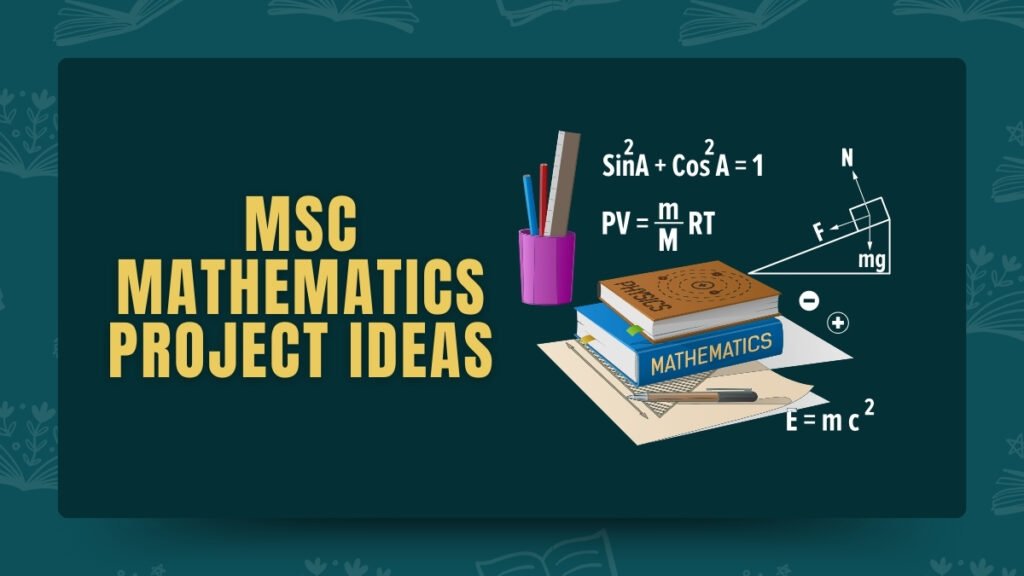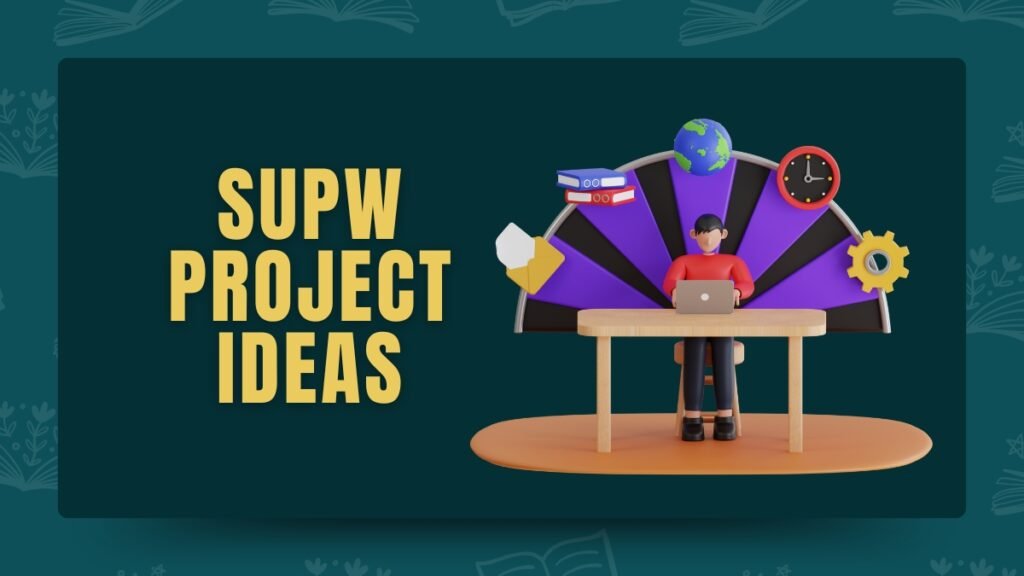Find fun and easy STEAM fair project ideas! Get inspired with cool science experiments, tech projects, and creative activities for your next fair.
Have you ever looked at a complex machine or a fascinating scientific phenomenon and thought, “How does that work?” Or perhaps you’ve been tasked with creating a project for a STEAM fair and found yourself overwhelmed by choices? You’re not alone. Many students struggle to come up with innovative ideas that blend science, technology, engineering, arts, and mathematics (STEAM).
According to recent surveys, a significant number of students feel daunted by the concept of STEAM projects. However, with the right guidance and inspiration, you can transform your ideas into stunning presentations.
In this article, we will explore mind-blowing STEAM fair project ideas that are suitable for various grade levels. From elementary to high school, these projects will engage your curiosity and help you develop critical skills.
STEAM Fair Project Ideas PDF
What Makes a Good STEAM Project?
A good STEAM project should:
- Be Engaging: Capture interest and encourage curiosity.
- Encourage Critical Thinking: Challenge students to solve problems creatively.
- Integrate Multiple Disciplines: Combine elements of science, technology, engineering, arts, and mathematics.
- Be Hands-On: Allow students to build, create, or experiment physically.
- Have Real-World Applications: Connect concepts to real-life situations or problems.
What Should I Do for STEAM Fair?
When preparing for a STEAM fair, consider the following steps:
- Choose a Topic: Pick an area that interests you.
- Research: Gather information and understand the science behind your idea.
- Plan Your Project: Outline your goals, materials needed, and steps to complete the project.
- Build/Experiment: Engage in hands-on activities.
- Prepare Your Presentation: Organize your findings, create visuals, and practice your presentation skills.
What is a STEAM Fair Project?
A STEAM fair project is an exhibit that showcases a student’s research, experiment, or creative endeavor that incorporates elements of science, technology, engineering, arts, and mathematics. These projects are often judged based on creativity, understanding of concepts, and presentation.
STEAM Fair Project Ideas by Grade Level
Here are some of the best STEAM Fair project ideas by grade level:
For 5th Grade
Plant Growth Experiment
- Explore how different types of light affect plant growth.
- Materials: Seeds, soil, pots, LED lights, sunlight.
- Focus: Biology and environmental science.
Homemade Volcano
- Create a volcano using baking soda and vinegar.
- Materials: Baking soda, vinegar, food coloring, clay.
- Focus: Chemical reactions.
Simple Machines
- Build a catapult using popsicle sticks.
- Materials: Popsicle sticks, rubber bands, small objects to launch.
- Focus: Physics and engineering principles.
For 7th Grade
Water Filtration System
- Create a simple water filter using sand, gravel, and activated charcoal.
- Materials: Plastic bottles, sand, gravel, activated charcoal.
- Focus: Environmental science.
Circuit Design
- Build a basic circuit to power an LED.
- Materials: Battery, wires, LED, breadboard.
- Focus: Electricity and circuits.
Behavior of Light
- Experiment with prisms and light to demonstrate refraction.
- Materials: Prisms, light source, white paper.
- Focus: Optics.
For 8th Grade
Robotics Project
- Build a simple robot using a kit or recycled materials.
- Materials: Robotics kit or cardboard, motors, sensors.
- Focus: Engineering and technology.
Chemical Garden
- Grow colorful crystals using a chemical reaction.
- Materials: Salts, water, glass container.
- Focus: Chemistry.
Solar Oven
- Create an oven that cooks using solar energy.
- Materials: Cardboard box, aluminum foil, plastic wrap.
- Focus: Renewable energy.
For High School
Hydroponics System
- Design a system to grow plants without soil.
- Materials: Nutrient solution, containers, grow lights.
- Focus: Botany and agricultural technology.
Smartphone App Development
- Create a simple app that addresses a community issue.
- Materials: Programming software, computer.
- Focus: Technology and computer science.
Environmental Impact Study
- Analyze the effects of local pollution.
- Materials: Survey tools, data collection forms.
- Focus: Environmental science.
Bridge Engineering
- Construct a bridge model using spaghetti.
- Materials: Spaghetti, glue, weights.
- Focus: Engineering and physics.
3D Printing Project
- Design and print a 3D object that solves a problem.
- Materials: 3D printer, design software.
- Focus: Technology and design.
Game Theory
- Explore mathematical strategies in games.
- Materials: Board games, statistical tools.
- Focus: Mathematics.
Biomechanical Analysis
- Study the mechanics of human movement using motion capture.
- Materials: Motion capture system, analysis software.
- Focus: Biology and physics.
Augmented Reality Experience
- Create a simple AR application.
- Materials: AR software, smartphone.
- Focus: Technology and computer science.
Disaster Preparedness Plan
- Develop a plan for natural disaster responses.
- Materials: Research resources, presentation materials.
- Focus: Environmental science and social studies.
Why Choose a STEM Project?
STEM projects are more than just fun activities; they offer numerous benefits for students:
- Enhances Problem-Solving Skills: Tackling real-world challenges encourages critical thinking.
- Fosters Creativity: STEM projects often require innovative solutions.
- Builds Collaboration: Many projects involve teamwork, teaching valuable social skills.
- Prepares for Future Careers: STEM fields are rapidly growing, and early exposure is beneficial.
- Encourages Inquiry: Students learn to ask questions and seek answers, promoting a love for learning.
- Promotes Hands-On Learning: Engaging with materials makes concepts easier to understand.
- Boosts Confidence: Completing a project successfully can enhance self-esteem.
Top STEM Fair Project Ideas You Need to Know
Here’s a concise list of standout project ideas to spark your interest:
- Build a Solar Oven: Harness solar energy to cook food.
- Create a Water Filter: Design a system that purifies water using natural materials.
- Robotics Challenge: Program a simple robot to complete tasks.
- Plant Growth Experiment: Investigate how different light sources affect plant growth.
- Build a Bridge: Construct a model bridge and test its strength.
- Chemical Reactions: Explore the effects of different substances in a safe experiment.
- Interactive Math Games: Create games that teach math concepts through play.
Steam Fair Project Ideas For Students
Here’s a list of 101+ exciting STEAM (Science, Technology, Engineering, Arts, and Mathematics) fair project ideas that students can explore:
Science Projects
- Make a solar oven with cardboard and foil to cook s’mores.
- Create a volcano with baking soda and vinegar.
- Build a water filter using sand, gravel, and charcoal.
- Test how different lights affect plant growth.
- Use red cabbage juice to test liquid acidity.
- Explore what affects magnet strength.
- Write secret messages with lemon juice and reveal with heat.
- Make a battery using fruits or veggies.
- Build a model to show how buildings survive earthquakes.
- Find out which liquid dissolves candy the fastest.
Technology Projects
- Build a weather station with Arduino for temperature and humidity.
- Set up a Raspberry Pi for media streaming.
- Create a robot that listens to voice commands.
- Make a message board with LED lights.
- Design a simple website using HTML and CSS.
- Create a game using Scratch or Python.
- Develop an app that generates QR codes.
- Design and print a 3D object.
- Create an app to teach coding basics.
- Build a simple virtual reality experience.
Engineering Projects
- Construct a spaghetti bridge and test its strength.
- Build a catapult to launch small objects.
- Design a protective egg drop contraption.
- Create a small wind turbine to generate electricity.
- Make a basic robot with motors and sensors.
- Build a generator that works when you pedal.
- Create a balloon rocket and measure its distance.
- Design a marble roller coaster.
- Build models of levers, pulleys, or gears.
- Create a hydraulic arm using syringes and tubes.
Arts Projects
- Create art from recycled materials.
- Take and display nature photographs.
- Make interactive art that responds to touch.
- Design a soundscape with natural sounds.
- Use AR apps to create interactive art.
- Print a sculpture using 3D design software.
- Make wearable art from sustainable materials.
- Plan and paint a community mural.
- Explore origami and create unique designs.
- Write and compose a piece of music with digital tools.
Mathematics Projects
- Look for Fibonacci patterns in nature and art.
- Create probability games to illustrate concepts.
- Collect data on a topic and visualize it with graphs.
- Research shapes in famous buildings.
- Create art based on fractal patterns.
- Develop your own math puzzles or riddles.
- Make tessellations that repeat without gaps.
- Compare different ways to measure length or volume.
- Show a number line with real-world examples.
- Use software to visualize real-world data.
Environmental Projects
- Start a recycling awareness campaign.
- Document local plants and animals.
- Set up a compost bin and observe it.
- Test local water for pH and other factors.
- Build a model of a solar-powered device.
- Create eco-friendly products and study their impact.
- Plan a sustainable garden with eco-friendly practices.
- Conduct an energy audit of your home.
- Make a plan to reduce plastic use in your community.
- Help restore a local wildlife area.
Community-Focused Projects
- Start a community garden for shared food.
- Promote healthy habits in your community.
- Connect older students with younger ones for support.
- Celebrate and document local cultures.
- Organize a food drive for local food banks.
- Research and share your town’s history.
- Create a disaster preparedness guide for families.
- Work with artists to create public art.
- Plan a neighborhood clean-up event.
- Organize a fundraising event for a local cause.
Innovative Ideas
- Design a simple smart device with Arduino.
- Create an app that solves a problem.
- Use a drone to take aerial photographs.
- Make biofuels from household waste.
- Build a VR learning experience.
- Sew electronics into fabric for interactive clothing.
- Develop a game that teaches new skills.
- Create an IoT device to collect environmental data.
- Build a simple blockchain model.
- Develop a basic AI program that learns from users.
Bonus Ideas
- Raise awareness about mental health.
- Experiment with food to create a recipe.
- Organize a historical event reenactment.
- Build a model spacecraft.
- Write and illustrate a children’s story.
- Explore the relationship between music and math.
- Join a citizen science project to gather data.
- Create a multimedia digital story.
- Encourage community participation in local decisions.
- Document a theme through photography.
Final Ideas
- Make a fun quiz on a topic you like.
- Study and document local plants.
- Design a sustainable model city.
- Produce a short music track using digital tools.
- Conduct simple physics experiments at home.
- Research how art represents historical events.
- Study the impact of social media on young people.
- Create a tech project that addresses a social issue.
- Build an app for community engagement.
- Simulate a disaster response plan for practice.
- Collaborate with students from another country on a project.
Engaging Engineering Projects for Young Innovators
- Bridge Engineering: Challenge students to design and build a bridge using limited materials.
- Egg Drop Challenge: Design a contraption that protects an egg from a high fall.
- Wind Turbine Model: Create a small wind turbine and measure its energy output.
- Rube Goldberg Machine: Design a complex machine that performs a simple task using a series of steps.
Exciting Technology Projects to Spark Curiosity
- Virtual Reality Experience: Create a simple VR application.
- Arduino Projects: Build interactive gadgets using Arduino boards.
- Game Development: Program a basic video game that teaches a concept.
- Website Creation: Design a website that educates others about a specific topic.
Hands-On Math Projects That Make Learning Fun
- Geometry Scavenger Hunt: Find and document geometric shapes in your environment.
- Math Board Games: Create a board game that reinforces math skills.
- Probability Experiments: Conduct experiments with dice or cards to understand probability.
How to Choose the Right STEM Project for You?
Selecting the right project can be crucial to your success:
- Identify Your Interests: Choose a topic that genuinely excites you.
- Consider Your Skills: Assess your strengths in science, technology, engineering, or math.
- Research: Look into potential projects and gather background information.
- Evaluate Resources: Ensure you have access to materials and tools needed for the project.
- Think About Impact: Choose a project that addresses a real-world issue or challenge.
Step-by-Step Guide to Completing Your STEM Project
- Choose Your Topic: Select an area of interest.
- Conduct Research: Gather information on your topic and understand the science behind it.
- Plan Your Project: Outline the steps you need to complete, including materials needed.
- Build or Experiment: Engage in hands-on activities, keeping detailed notes.
- Analyze Your Results: Evaluate the outcomes of your project.
- Create Your Presentation: Organize your findings, include visuals, and prepare to share.
- Practice: Rehearse your presentation to build confidence.
Tips for Presenting Your STEM Project Effectively
- Be Clear and Concise: Focus on key points to avoid overwhelming your audience.
- Use Visuals: Include charts, models, or slides to illustrate your ideas.
- Engage Your Audience: Ask questions or invite them to participate in demonstrations.
- Practice Your Delivery: Rehearse multiple times to improve fluency and confidence.
- Be Prepared for Questions: Anticipate inquiries and prepare thoughtful responses.
Final Words
Engaging in STEAM projects is not only a great way to learn but also a fun opportunity to explore your interests. The projects listed above are designed to inspire creativity and critical thinking, making them suitable for students across various grade levels. Remember, the best STEAM projects are those that excite you and allow you to explore new ideas.
As you embark on your STEAM fair journey, keep in mind the importance of research, planning, and creativity. Don’t hesitate to modify these ideas to make them your own. With curiosity and determination, you can create a project that captivates both your audience and yourself. So, roll up your sleeves, get started, and enjoy the process of discovery.
Adam Tesla is a creative thinker with 5 years of experience in providing unique and engaging project ideas across various categories and niches. His expertise lies in simplifying complex topics and presenting fresh, innovative concepts that inspire students, professionals, and entrepreneurs.


